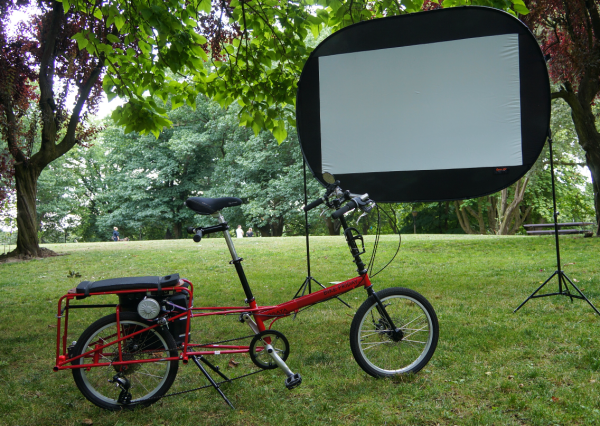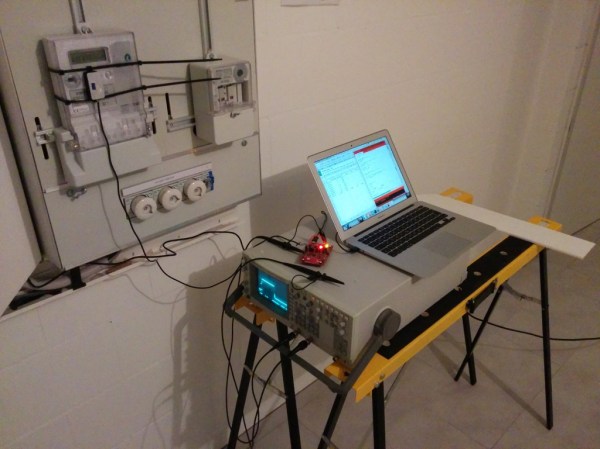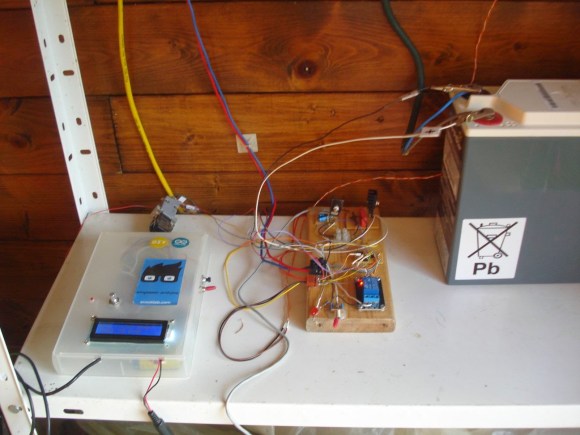When the apocalypse hits and your power goes out, how are you going to keep yourself entertained? If you are lucky enough to be friends with [stopsendingmejunk], you can just hop on his pedal powered cinema and watch whatever movies you have stored on digital media.
This unit is built around an ordinary bicycle. A friction drive is used to generate the electricity via pedal power. In order to accomplish this, a custom steel stand was fabricated together in order to lift the rear wheel off the ground. A 24V 200W motor is used as the generator. [stopsendingmejunk] manufactured a custom spindle for the motor shaft. The spindle is made from a skateboard wheel. The motor is mounted in such a way that it can be lowered to rub the skateboard wheel against the bicycle wheel. This way when the rear bicycle wheel spins, it also rotates the motor. The motor can be lifted out of the way when cruising around if desired.
The power generated from the motor first runs through a regulator. This takes the variable voltage from the generator and smooths it out to a nice even power signal. This regulated power then charges two Goal Zero Sherpa 100 lithium batteries. The batteries allow for a buffer to allow the movie to continue playing while changing riders. The batteries then power the Optomo 750 projector as well as a set of speakers.


















